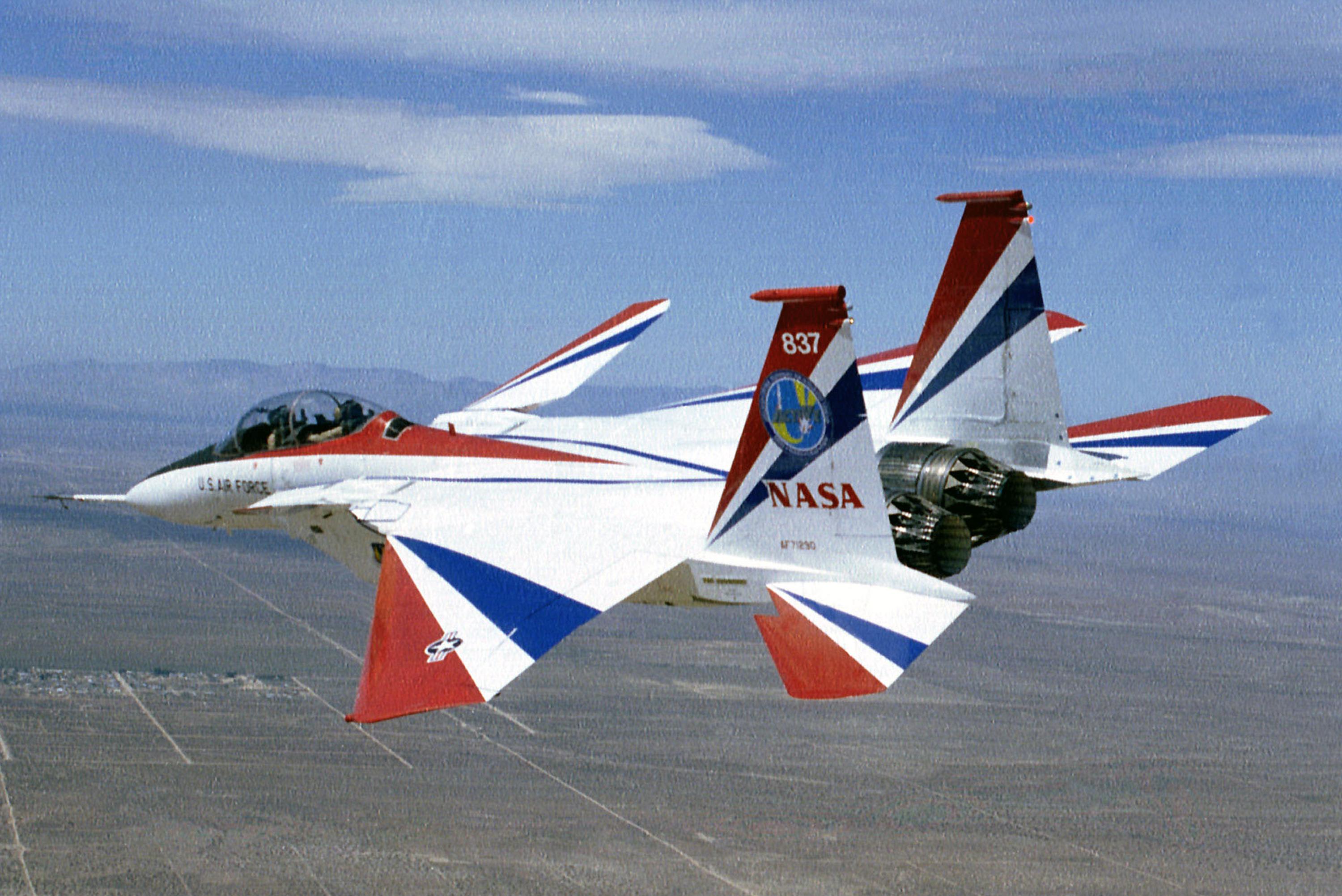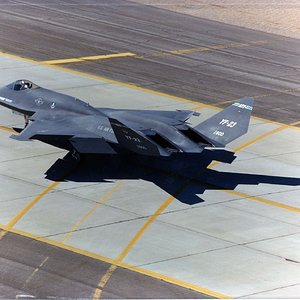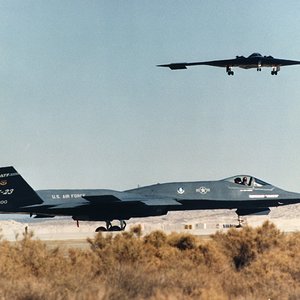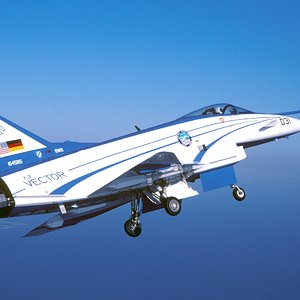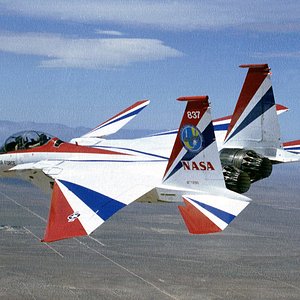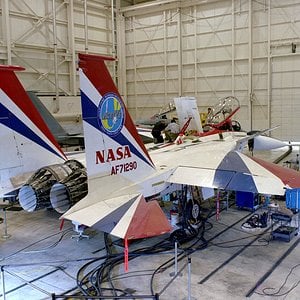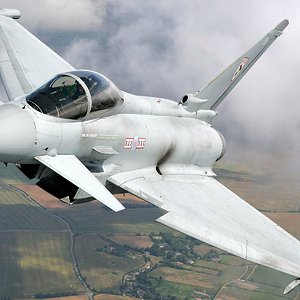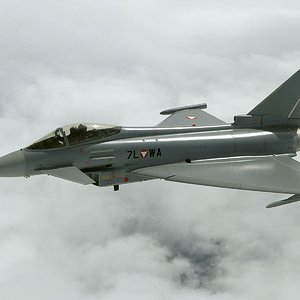Navigation
Install the app
How to install the app on iOS
Follow along with the video below to see how to install our site as a web app on your home screen.
Note: This feature may not be available in some browsers.
More options
You are using an out of date browser. It may not display this or other websites correctly.
You should upgrade or use an alternative browser.
You should upgrade or use an alternative browser.
Design and development
In 1975, Langley Research Center began to conduct sponsored programs studying two-dimensional thrust vectoring nozzles; government and industry studies of nonaxisymmetric two-dimensional (2-D) nozzles in the early 1970s had identified significant payoffs for thrust-vectoring 2-D nozzle concepts.
In 1977, Langley started a system integration study of thrust-vectoring, thrust-reversing, and 2-D nozzles on the F-15 with McDonnell Douglas. In 1984, the Flight Dynamics Laboratory, the Air Force Aeronautical Systems Division awarded a contract to McDonnell Douglas for an advanced development STOL/MTD experimental aircraft.
The aircraft used in the STOL/MTD program[4] has flown several times since the successful STOL/MTD program completion in 1991 that used thrust vectoring and canard foreplanes to improve low-speed performance. This aircraft tested high-tech methods for operating from a short runway. This F-15 was part of an effort to improve ABO (Air Base Operability), the survival of warplanes and fighting capability at airfields under attack.
The F-15 STOL/MTD tested ways to land and take off from wet, bomb-damaged runways. The aircraft used a combination of reversible engine thrust, jet nozzles that could be deflected by 20 degrees, and canard foreplanes. Pitch vectoring/reversing nozzles and canard foreplanes were fitted to the F-15 in 1988.[citation needed] NASA acquired the plane in 1993 and replaced the engines with Pratt & Whitney F100-229 engines with Pitch/Yaw vectoring nozzles.[5] The canard foreplanes were derived from the F/A-18's vertical stabilizer.
Prior to 1991, when McDonnell Douglas ended its program after accomplishing their flight objectives, the F-15 STOL/MTD plane achieved some impressive performance results:[6]
demonstrated vectored takeoffs with rotation at speeds as low as 42 mph (68 km/h)
a 25-percent reduction in takeoff roll
landing on just 1,650 ft (500 m) of runway compared to 7,500 ft (2,300 m) for the standard F-15
thrust reversal in flight to produce rapid decelerations
controlled flight at angles of attack up to about 85 degrees
F-15 STOL/MTD special features
Canard Foreplanes: The canards fitted to the front of the aircraft improve pitch maneuverability.
Thrust-Vectoring Nozzles: By using a combination of the movable nozzles and vanes in the jet pipe, the STOL/MTD can direct exhaust forward, outward or at an angle of up to 20 degrees to the axis of the aircraft.[citation needed]
Combined Canard, Elevator and Nozzle effect: With its highly advanced flight control software, the STOL/MTD coordinates the movement of the forward canards to give up-force, and the tailplanes and nozzles produce a down-force when maneuvering. This produces a pitching moment larger than that possible with the conventional elevator-only configuration. As a result, maneuverability is far improved.
Fast Stop-Start: By vectoring engine exhaust from above and below the nozzles and turning the canard foreplanes to act as giant airbrakes, the STOL/MTD could decelerate very rapidly and then accelerate fast using its powerful F100 engines. This kind of maneuver might be useful in a dogfight.
Further modifications
During the 1990s the same F-15 airframe was further modified (canards and nozzles were retained) for the ACTIVE (Advanced Control Technology for Integrated VEhicles) program in which Pitch/Yaw Balance Beam Nozzles (P/YBBN) and advanced control-logic programming were investigated. In the ACTIVE configuration it was also used for the LANCETS (lift and nozzle change effects on tail shock) program, in which computed supersonic shockwave parameters were compared to those measured in flight. The LANCETS flight tests ended in December 2008.[7] F-15 ACTIVE lasted from 1993–1999.
The aircraft would later be used in the F-15 IFCS (Intelligent Flight Control System) program from 1999 to 2008. The plane was also used for the Space-Based Range Demonstration and Certification project under the Exploration Communications and Navigation Systems program (SBRDC/ECANS) from 2006 to 2007, High Stability Engine Control (HISTEC) program and High-Speed Research
In 1975, Langley Research Center began to conduct sponsored programs studying two-dimensional thrust vectoring nozzles; government and industry studies of nonaxisymmetric two-dimensional (2-D) nozzles in the early 1970s had identified significant payoffs for thrust-vectoring 2-D nozzle concepts.
In 1977, Langley started a system integration study of thrust-vectoring, thrust-reversing, and 2-D nozzles on the F-15 with McDonnell Douglas. In 1984, the Flight Dynamics Laboratory, the Air Force Aeronautical Systems Division awarded a contract to McDonnell Douglas for an advanced development STOL/MTD experimental aircraft.
The aircraft used in the STOL/MTD program[4] has flown several times since the successful STOL/MTD program completion in 1991 that used thrust vectoring and canard foreplanes to improve low-speed performance. This aircraft tested high-tech methods for operating from a short runway. This F-15 was part of an effort to improve ABO (Air Base Operability), the survival of warplanes and fighting capability at airfields under attack.
The F-15 STOL/MTD tested ways to land and take off from wet, bomb-damaged runways. The aircraft used a combination of reversible engine thrust, jet nozzles that could be deflected by 20 degrees, and canard foreplanes. Pitch vectoring/reversing nozzles and canard foreplanes were fitted to the F-15 in 1988.[citation needed] NASA acquired the plane in 1993 and replaced the engines with Pratt & Whitney F100-229 engines with Pitch/Yaw vectoring nozzles.[5] The canard foreplanes were derived from the F/A-18's vertical stabilizer.
Prior to 1991, when McDonnell Douglas ended its program after accomplishing their flight objectives, the F-15 STOL/MTD plane achieved some impressive performance results:[6]
demonstrated vectored takeoffs with rotation at speeds as low as 42 mph (68 km/h)
a 25-percent reduction in takeoff roll
landing on just 1,650 ft (500 m) of runway compared to 7,500 ft (2,300 m) for the standard F-15
thrust reversal in flight to produce rapid decelerations
controlled flight at angles of attack up to about 85 degrees
F-15 STOL/MTD special features
Canard Foreplanes: The canards fitted to the front of the aircraft improve pitch maneuverability.
Thrust-Vectoring Nozzles: By using a combination of the movable nozzles and vanes in the jet pipe, the STOL/MTD can direct exhaust forward, outward or at an angle of up to 20 degrees to the axis of the aircraft.[citation needed]
Combined Canard, Elevator and Nozzle effect: With its highly advanced flight control software, the STOL/MTD coordinates the movement of the forward canards to give up-force, and the tailplanes and nozzles produce a down-force when maneuvering. This produces a pitching moment larger than that possible with the conventional elevator-only configuration. As a result, maneuverability is far improved.
Fast Stop-Start: By vectoring engine exhaust from above and below the nozzles and turning the canard foreplanes to act as giant airbrakes, the STOL/MTD could decelerate very rapidly and then accelerate fast using its powerful F100 engines. This kind of maneuver might be useful in a dogfight.
Further modifications
During the 1990s the same F-15 airframe was further modified (canards and nozzles were retained) for the ACTIVE (Advanced Control Technology for Integrated VEhicles) program in which Pitch/Yaw Balance Beam Nozzles (P/YBBN) and advanced control-logic programming were investigated. In the ACTIVE configuration it was also used for the LANCETS (lift and nozzle change effects on tail shock) program, in which computed supersonic shockwave parameters were compared to those measured in flight. The LANCETS flight tests ended in December 2008.[7] F-15 ACTIVE lasted from 1993–1999.
The aircraft would later be used in the F-15 IFCS (Intelligent Flight Control System) program from 1999 to 2008. The plane was also used for the Space-Based Range Demonstration and Certification project under the Exploration Communications and Navigation Systems program (SBRDC/ECANS) from 2006 to 2007, High Stability Engine Control (HISTEC) program and High-Speed Research

